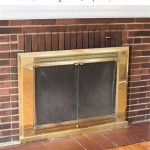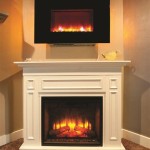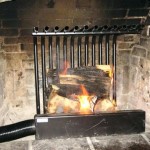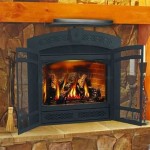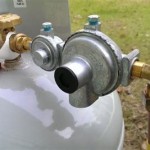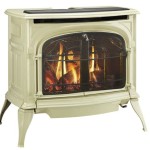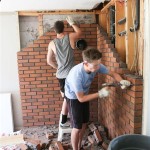Installing a Gas Fireplace in Your Basement: A Comprehensive Guide
Adding a gas fireplace to a basement can significantly enhance the space's comfort and appeal. Basements, often cooler than other parts of a home, benefit from the supplemental heat and ambiance a fireplace provides. However, the installation process requires careful planning and adherence to safety regulations to ensure proper and efficient operation. This article outlines the key considerations and steps involved in installing a gas fireplace in a basement.
Assessing the Suitability of Your Basement
Before embarking on the installation process, it's crucial to assess the suitability of your basement for a gas fireplace. Several factors play a critical role in determining whether your basement can accommodate this type of appliance safely and effectively. These factors include ventilation, gas line access, structural considerations, and local building codes.
Ventilation: Gas fireplaces require adequate ventilation to safely exhaust combustion byproducts. This typically involves either a direct vent system, which draws air from outside and vents directly outside through a wall, or a B-vent system, which vents through a chimney or vertical vent. Direct vent fireplaces are often preferred for basements because they do not require an existing chimney. The chosen venting system must comply with all applicable building codes and manufacturer specifications.
Gas Line Access: Access to an existing gas line or the feasibility of extending one to the basement is essential. A licensed gas fitter should evaluate the existing gas line's capacity and determine if it can handle the additional load of the fireplace. If an extension is required, the plumber will need to assess the routing of the new gas line, ensuring it meets all safety regulations and doesn't interfere with other utilities or structural elements.
Structural Considerations: The structural integrity of the basement must be sufficient to support the weight of the fireplace. Most gas fireplaces are relatively lightweight, but larger units may require additional support. Furthermore, the fireplace's placement relative to walls, floors, and ceilings must comply with clearance requirements specified by the manufacturer and local building codes. These clearances are crucial for preventing fire hazards.
Local Building Codes and Permits: Contacting the local building department is a necessary step. They can provide information on the specific regulations and permit requirements for installing a gas fireplace in your area. Ignoring these regulations can lead to penalties and potential safety hazards. Obtaining the necessary permits ensures that the installation is inspected and meets the required safety standards.
Selecting the Right Gas Fireplace
The market offers a wide variety of gas fireplaces, each with its own set of features, efficiencies, and aesthetic designs. Choosing the right fireplace for your basement involves considering factors such as BTU output, venting options, style, and budget. A thorough evaluation of these aspects will ensure you select a fireplace that meets your heating needs and complements your basement's decor.
BTU Output: BTU (British Thermal Unit) is a measure of the fireplace's heating capacity. The appropriate BTU output depends on the size of your basement and the level of supplemental heat you desire. A fireplace with too low a BTU rating may not adequately heat the space, while one with too high a rating could lead to overheating. Consulting with a fireplace professional can help you determine the optimal BTU output for your specific needs.
Venting Options: As previously mentioned, direct vent and B-vent systems are the two primary venting options. Direct vent fireplaces are generally easier to install in basements where an existing chimney is not available. They offer greater placement flexibility because they can vent horizontally through a wall. B-vent fireplaces require a vertical vent, which may necessitate modifications to your home's structure.
Style and Design: Gas fireplaces come in a range of styles, from traditional to contemporary. Options include freestanding units, wall-mounted units, and inserts that can be installed within an existing fireplace opening (if present). Consider the overall aesthetic of your basement and choose a fireplace that complements the existing decor. Factors such as the firebox design, log set, and surround material can significantly impact the fireplace's appearance.
Efficiency and Cost: The efficiency of a gas fireplace is measured by its AFUE (Annual Fuel Utilization Efficiency) rating. A higher AFUE rating indicates a more efficient fireplace, which will result in lower operating costs. However, more efficient fireplaces often have a higher initial purchase price. Evaluate the long-term cost savings in relation to the upfront investment when making your decision.
The Installation Process: A Step-by-Step Guide
Installing a gas fireplace involves several critical steps, including preparing the installation site, running the gas line, installing the venting system, connecting the fireplace, and performing a final inspection. Each step must be executed with precision and adherence to safety regulations to ensure the fireplace operates safely and efficiently.
Preparing the Installation Site: This involves clearing the area where the fireplace will be installed and ensuring the floor is level and structurally sound. Depending on the fireplace model and installation requirements, you may need to construct a hearth pad or platform to provide a non-combustible surface. Consult the manufacturer's instructions for specific requirements regarding the installation site preparation.
Running the Gas Line: This is a task best left to a licensed gas fitter. The plumber will run a gas line from the existing gas supply to the fireplace location, ensuring the pipe is properly sized and connected. They will also install a shut-off valve near the fireplace for safety and maintenance purposes. A pressure test will be conducted to ensure there are no leaks in the gas line.
Installing the Venting System: The venting system must be installed according to the manufacturer's instructions and local building codes. For direct vent fireplaces, this typically involves cutting a hole through the exterior wall and installing the vent pipes. The vent pipes must be properly sealed to prevent exhaust gases from entering the home. For B-vent fireplaces, the vent pipes must be connected to a chimney or vertical vent.
Connecting the Fireplace: Once the gas line and venting system are in place, the fireplace can be connected. This involves connecting the gas line to the fireplace's gas valve and securing the vent pipes to the fireplace. All connections must be tight and leak-free. Follow the manufacturer's instructions carefully when making these connections.
Electrical Connections: Some gas fireplaces require an electrical connection for features such as electronic ignition, blowers, or remote controls. If electrical wiring is needed, it's advisable to hire a licensed electrician to ensure the wiring is done safely and complies with electrical codes. The electrician will run the necessary wiring from the electrical panel to the fireplace location and connect it to the fireplace according to the manufacturer's instructions.
Final Inspection and Testing: After the fireplace is installed, it's essential to perform a final inspection to ensure everything is properly connected and functioning correctly. This includes checking for gas leaks, verifying the venting system is properly sealed, and testing the fireplace's ignition and operation. A professional inspection by the local building department is also necessary to obtain final approval for the installation.
Safety Measures: Installing a carbon monoxide detector in the basement near the fireplace is crucial. Carbon monoxide is a colorless, odorless gas that can be produced by incomplete combustion. The detector will alert you to the presence of carbon monoxide, allowing you to take corrective action and prevent carbon monoxide poisoning. Regularly check and maintain the carbon monoxide detector to ensure it's functioning properly.
Improper installation of a gas fireplace can lead to serious safety hazards, including gas leaks, carbon monoxide poisoning, and fires. Therefore, it is highly recommended to hire qualified professionals for the installation process. Licensed plumbers, gas fitters, and electricians have the knowledge, experience, and tools necessary to install the fireplace safely and efficiently. They will ensure that the installation complies with all applicable building codes and safety regulations.
Proper maintenance is essential for ensuring the longevity and safe operation of your gas fireplace. Schedule regular inspections and maintenance by a qualified technician. These inspections typically include cleaning the burner assembly, checking the venting system, and inspecting the gas line for leaks. Following the manufacturer's recommendations for maintenance will help prevent problems and ensure your fireplace continues to operate safely and efficiently.
By carefully considering all the factors and following the steps outlined in this guide, you can successfully install a gas fireplace in your basement and enjoy the warmth and comfort it provides. Remember to prioritize safety, adhere to all applicable building codes, and seek professional assistance when needed. A properly installed and maintained gas fireplace can transform your basement into a cozy and inviting living space.

Fireplace In Basement 101 Everything Homeowners Must Know

Fireplace In Basement 101 Everything Homeowners Must Know

Netnewsledger Things To Consider When Adding A Fireplace Your Basement

Will A Fireplace Heat Basements We Love Fire

Basement Fireplaces Builders

Who Should Service A Gas Fireplace Northern Va Winston S

How To Install A Gas Fireplace With Tile Surround And Wood Mantel Sima Spaces

Options To Keep Your Basement Warm All Winter Cressy Door Fireplace

Gas Fireplace For Your Basement

How To Install A Gas Fireplace With Tile Surround And Wood Mantel Sima Spaces
Related Posts


